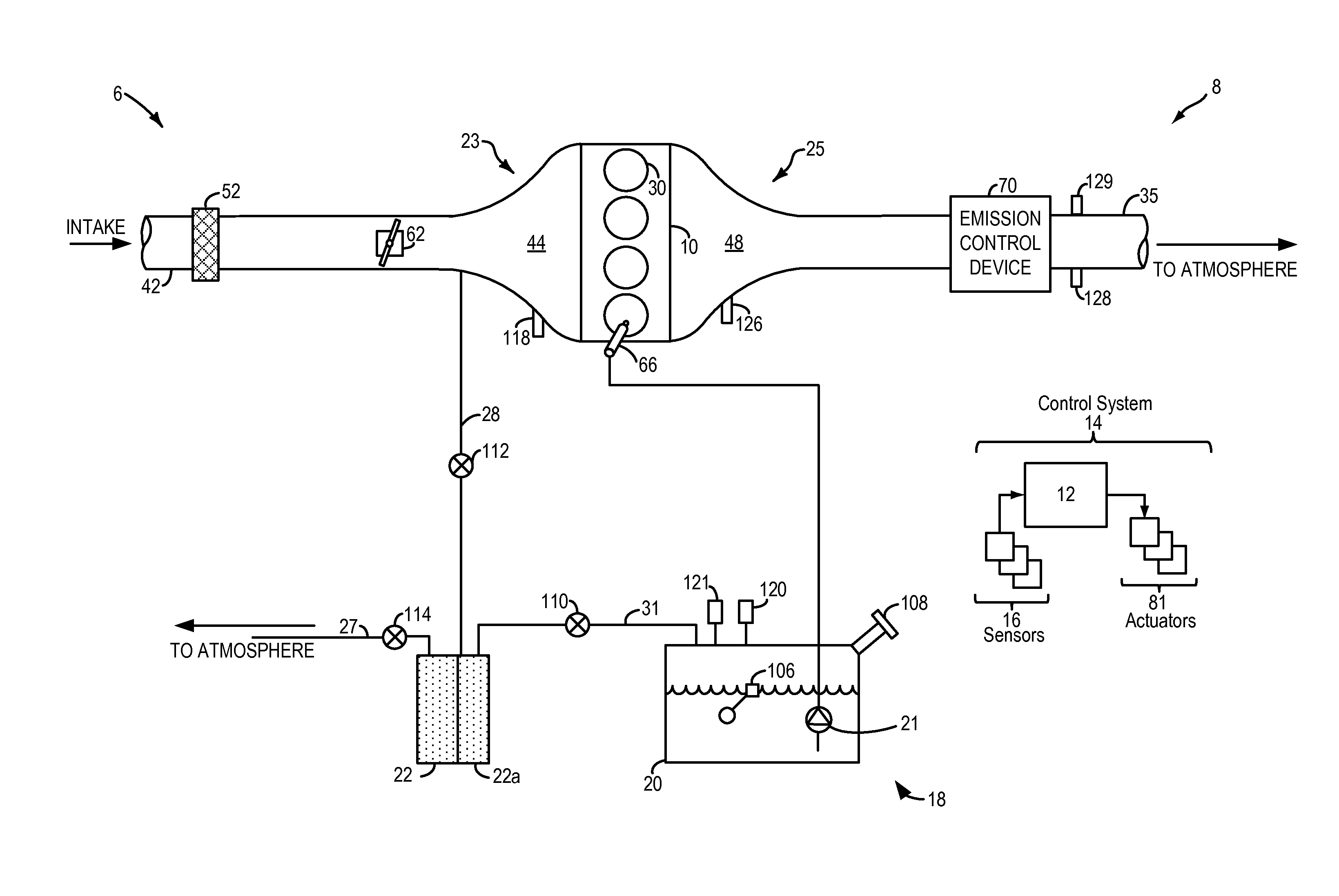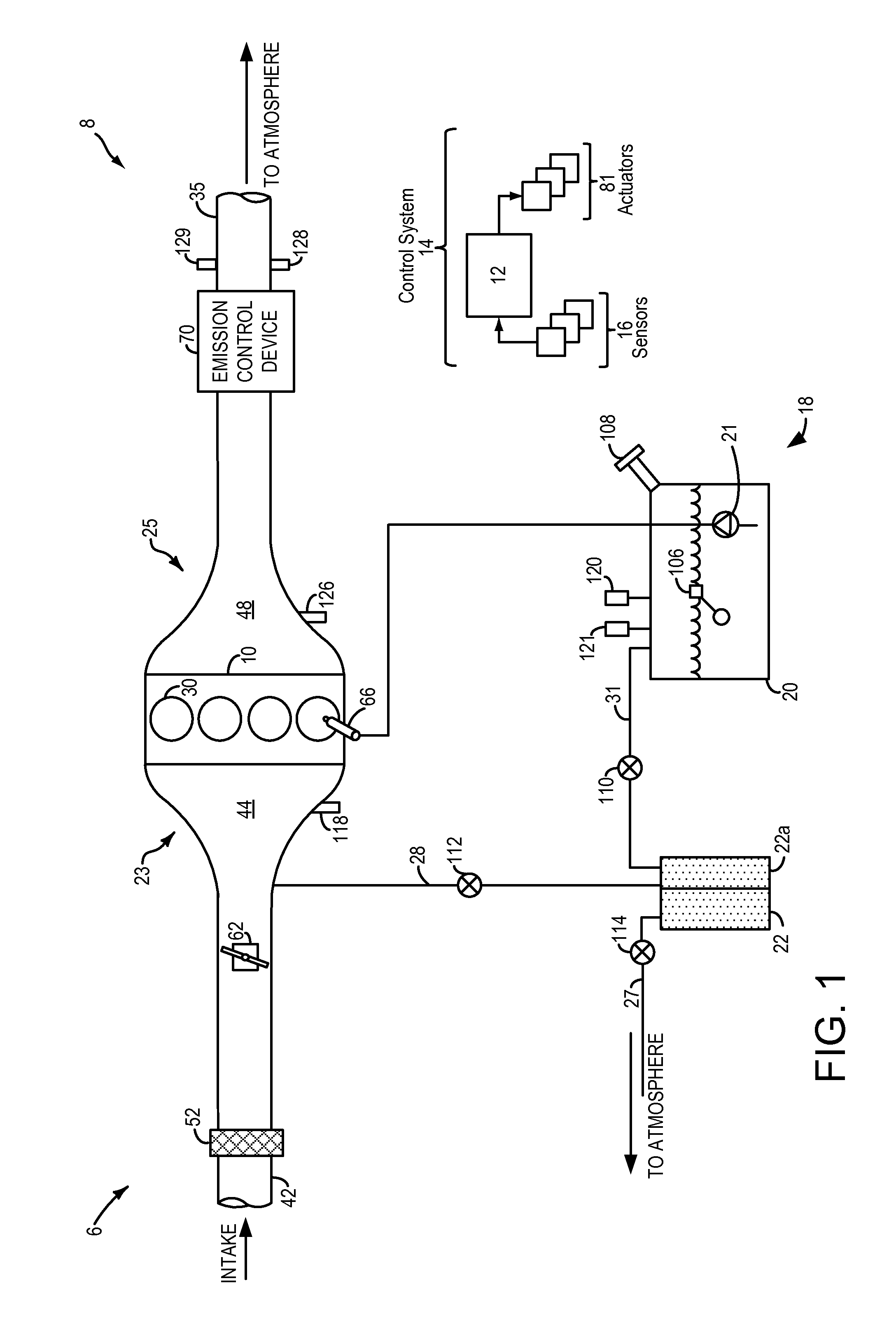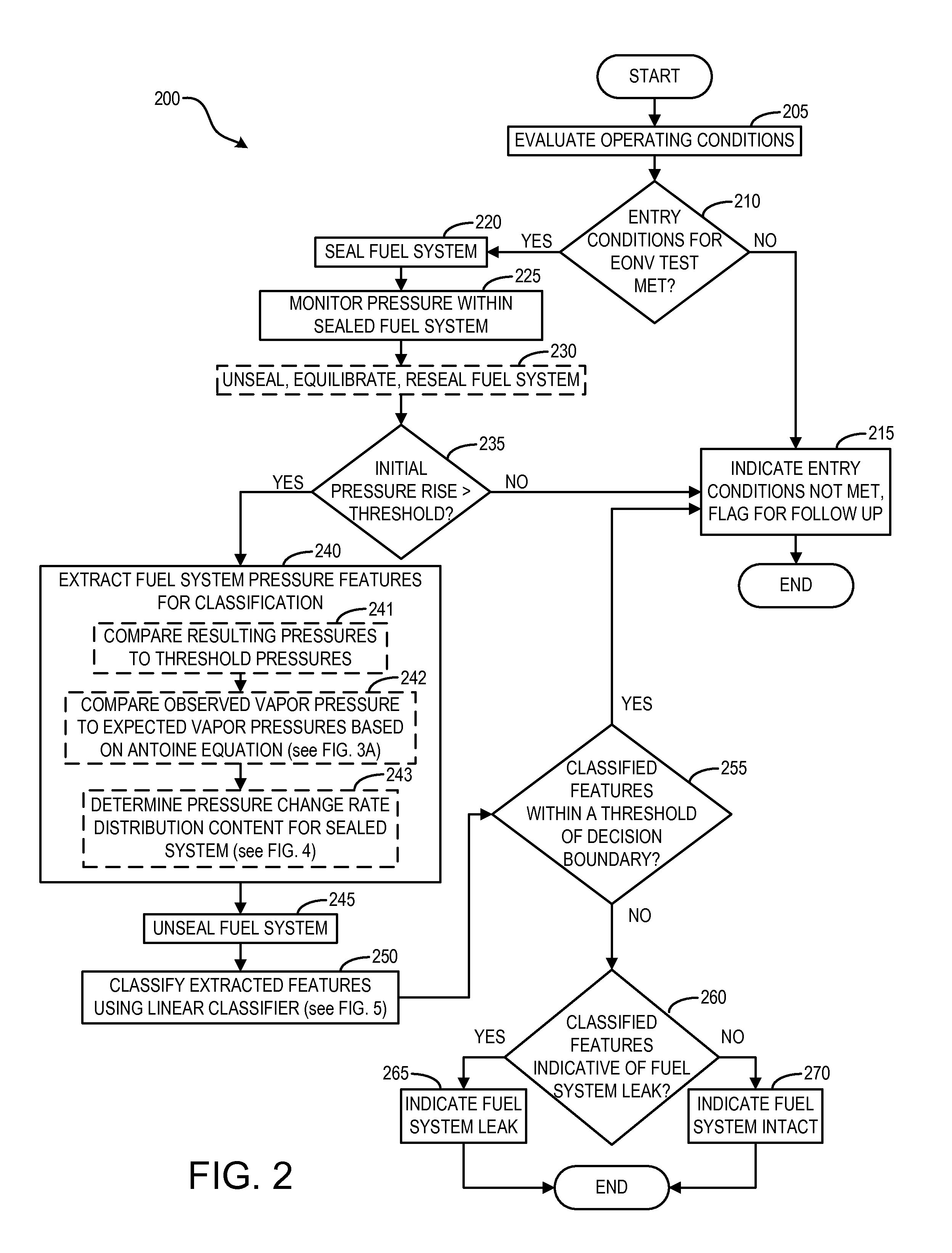System and methods for fuel system leak detection
- Summary
- Abstract
- Description
- Claims
- Application Information
AI Technical Summary
Benefits of technology
Problems solved by technology
Method used
Image
Examples
Embodiment Construction
[0016]This detailed description relates to systems and methods for a vehicle fuel system. More specifically, the description relates to systems and methods for performing engine-off natural vacuum tests on a fuel system for the purpose of detecting leaks. The fuel system may be included in a hybrid vehicle system, as shown schematically in FIG. 1. FIG. 2 shows an example method for an EONV test, including the extraction of fuel system pressure features that may be classified in order to determine whether the fuel system is leaky or intact. One example fuel system pressure feature is a comparison of observed vapor pressure and expected vapor pressure based on the Antoine equation. An example method thereof is shown in FIG. 3A. FIG. 3B shows an example plot of pressure / temperature relationships for two different fuel compositions, the pressure / temperature relationships transformed by the Antoine equation. An example timeline for an EONV test including this comparison is shown in FIG. ...
PUM
 Login to View More
Login to View More Abstract
Description
Claims
Application Information
 Login to View More
Login to View More - R&D
- Intellectual Property
- Life Sciences
- Materials
- Tech Scout
- Unparalleled Data Quality
- Higher Quality Content
- 60% Fewer Hallucinations
Browse by: Latest US Patents, China's latest patents, Technical Efficacy Thesaurus, Application Domain, Technology Topic, Popular Technical Reports.
© 2025 PatSnap. All rights reserved.Legal|Privacy policy|Modern Slavery Act Transparency Statement|Sitemap|About US| Contact US: help@patsnap.com



